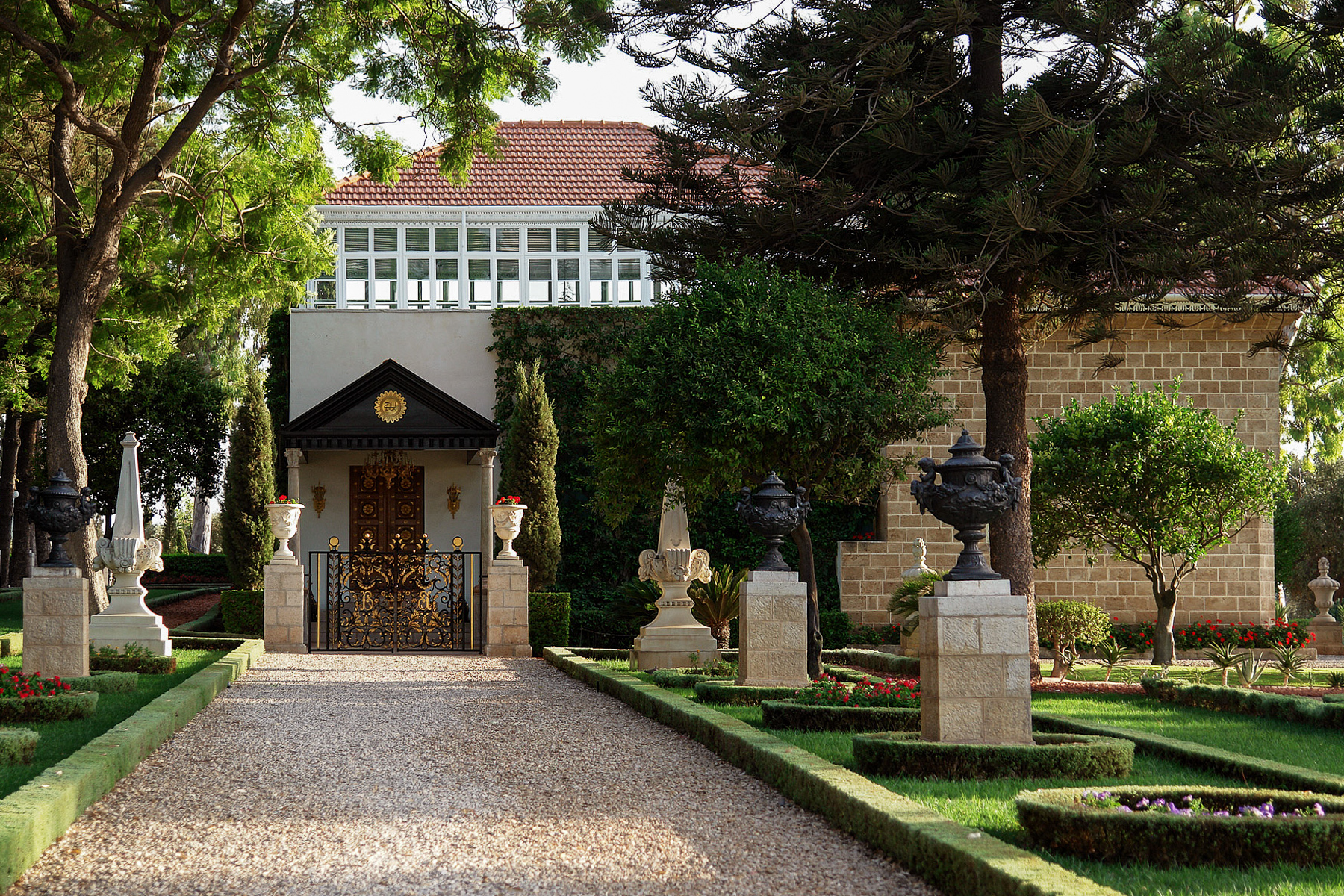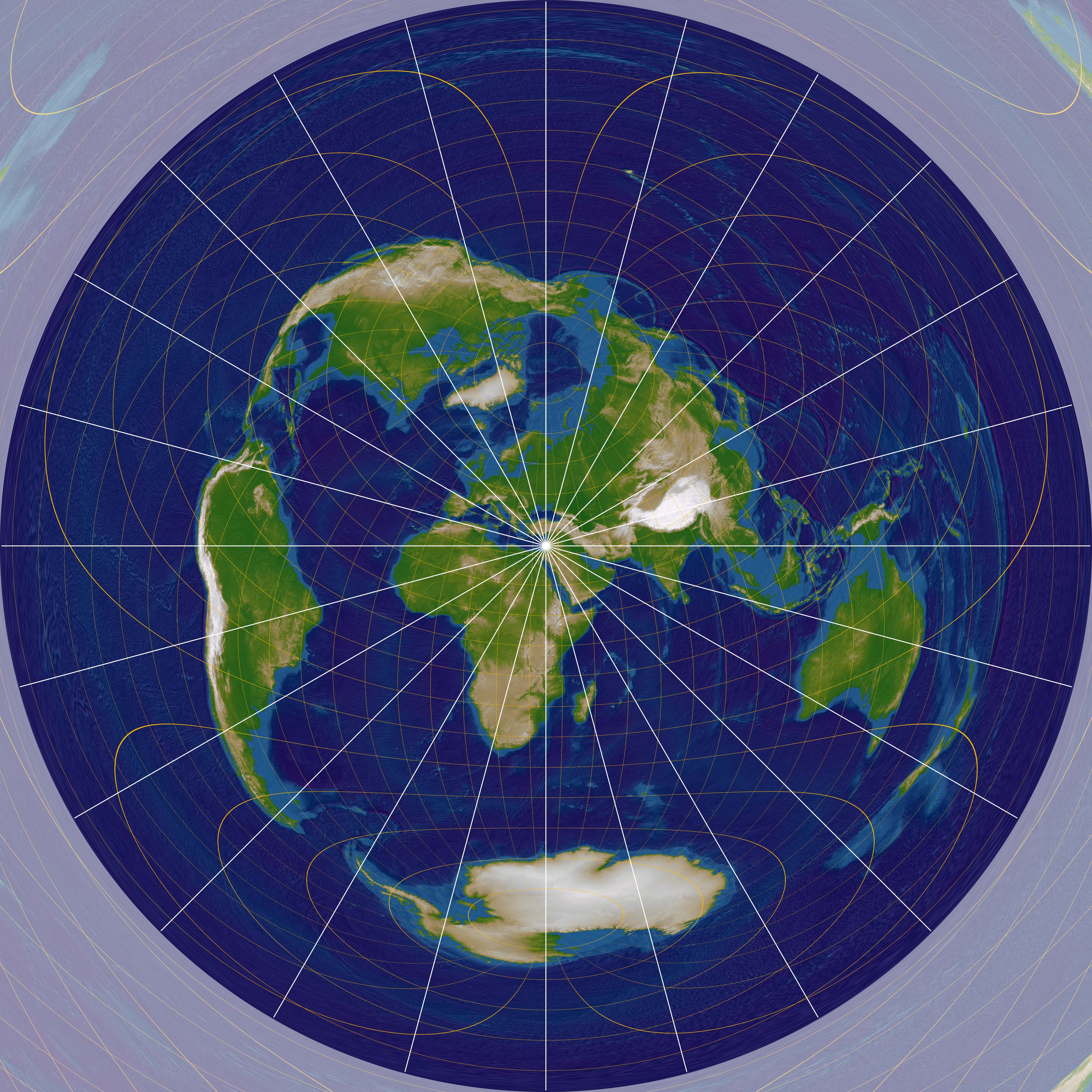Qiblih Direction on:
[Wikipedia]
[Google]
[Amazon]
__NOTOC__

 In the
In the
Excerpts from the Kitáb-i-Aqdas regarding the QiblihFind the direction to Bahji with Google Maps
{{Baháʼí Bahá'í prayer Orientation (geometry) fr:Qiblih

 In the
In the Baháʼí Faith
The Baháʼí Faith is a religion founded in the 19th century that teaches the Baháʼí Faith and the unity of religion, essential worth of all religions and Baháʼí Faith and the unity of humanity, the unity of all people. Established by ...
, the Qiblih (, "direction") is the location to which Baháʼís face when saying their daily obligatory prayers. The Qiblih is fixed at the Shrine of Baháʼu'lláh
The Mansion of Bahjí (, Qasr Bahjī, ''Mansion of Delight'') is a summer house in Acre, Israel where Baháʼu'lláh, the founder of the Baháʼí Faith, died in 1892. He was buried in an adjacent house, which became the Shrine of Baháʼu'lláh, ...
, near Acre
The acre ( ) is a Unit of measurement, unit of land area used in the Imperial units, British imperial and the United States customary units#Area, United States customary systems. It is traditionally defined as the area of one Chain (unit), ch ...
, in present-day Israel
Israel, officially the State of Israel, is a country in West Asia. It Borders of Israel, shares borders with Lebanon to the north, Syria to the north-east, Jordan to the east, Egypt to the south-west, and the Mediterranean Sea to the west. Isr ...
; approximately at .
In Bábism
Bábism () is a Messianism, messianic movement founded in 1844 by Báb, the Báb ( 'Ali Muhammad). The Báb, an Iranian merchant-turned-prophet, professed that there is one incorporeal, unknown, and incomprehensible GodEdward Granville Browne ...
the Qiblih was originally identified by the Báb
The Báb (born ʻAlí-Muḥammad; ; ; 20 October 1819 – 9 July 1850) was an Iran
Iran, officially the Islamic Republic of Iran (IRI) and also known as Persia, is a country in West Asia. It borders Iraq to the west, Turkey, Azerbai ...
with " the One Whom God will make manifest", a messianic figure predicted by the Báb. Baháʼu'lláh
Baháʼu'lláh (, born Ḥusayn-ʻAlí; 12 November 1817 – 29 May 1892) was an Iranian religious leader who founded the Baháʼí Faith. He was born to an aristocratic family in Iran and was exiled due to his adherence to the messianic Báb ...
, the Prophet-founder of the Baháʼí Faith claimed to be the figure predicted by the Báb. In the Kitáb-i-Aqdas
The ''Kitáb-i-Aqdas'' () is the central religious text of the Baháʼí Faith, written by Baháʼu'lláh, the founder of the religion, in 1873. Though it is the main source of Baháʼí laws and practices, much of the content deals with other ...
, Baháʼu'lláh confirms the Báb's ordinance and further ordains his final resting-place as the Qiblih for his followers. ʻAbdu'l-Bahá
ʻAbdu'l-Bahá (; Persian: , ;, 23 May 1844 – 28 November 1921), born ʻAbbás (, ), was the eldest son of Baháʼu'lláh, founder of the Bahá’í Faith, who designated him to be his successor and head of the Baháʼí Faith from 1892 un ...
describes that spot as the "luminous Shrine", "the place around which circumambulate the Concourse on High". The concept exists in other religions. Jews face Jerusalem, more specifically the site of the former Temple of Jerusalem
The Temple in Jerusalem, or alternatively the Holy Temple (; , ), refers to the two religious structures that served as the central places of worship for Israelites and Jews on the modern-day Temple Mount in the Old City of Jerusalem. Accord ...
. Muslims face the Kaaba
The Kaaba (), also spelled Kaba, Kabah or Kabah, sometimes referred to as al-Kaba al-Musharrafa (), is a stone building at the center of Islam's most important mosque and Holiest sites in Islam, holiest site, the Masjid al-Haram in Mecca, Sa ...
in Mecca, which they also call the ''Qibla
The qibla () is the direction towards the Kaaba in the Great Mosque of Mecca, Sacred Mosque in Mecca, which is used by Muslims in various religious contexts, particularly the direction of prayer for the salah. In Islam, the Kaaba is believed to ...
'' (another transliteration of Qiblih).
Baháʼís do not worship the Shrine of Baháʼu'lláh or its contents, the Qiblih is simply a focal point for the obligatory prayers. When praying obligatory prayers the members of the Baháʼí Faith face in the direction of the Qiblih. It is a fixed requirement for the recitation of an obligatory prayer, but for other prayers and devotions one may follow what is written in the Qurʼan: "Whichever way ye turn, there is the face of God."
Burial of the dead
"The dead should be buried with their face turned towards the Qiblih. This also is in accordance with what is practiced inIslam
Islam is an Abrahamic religions, Abrahamic monotheistic religion based on the Quran, and the teachings of Muhammad. Adherents of Islam are called Muslims, who are estimated to number Islam by country, 2 billion worldwide and are the world ...
. There is also a congregational prayer to be recited. Besides this there is no other ceremony to be performed" (From a letter written on behalf of Shoghi Effendi
Shoghí Effendi (; ;1896 or 1897 – 4 November 1957) was Guardian of the Baháʼí Faith from 1922 until his death in 1957. As the grandson and successor of ʻAbdu'l-Bahá, he was charged with guiding the development of the Baháʼí Faith, in ...
to an individual believer, July 6, 1935).
See also
*Direction of prayer
Prayer in a certain direction is characteristic of many world religions, such as Judaism, Christianity, Islam, and the Bahá'í Faith.
Judaism
Jews traditionally pray in the direction of Jerusalem, where the presence of the transcendent God ...
** ''Mizrah
''Mizrah'' (also spelled ''Mizrach'', ''Mizrakh'') () is the "east" and the direction that Jews in the Diaspora west of Israel face during prayer. Practically speaking, Jews face the city of Jerusalem when praying, and those north, east, or s ...
'', the direction of prayer in the Jewish faith
Judaism () is an Abrahamic, monotheistic, ethnic religion that comprises the collective spiritual, cultural, and legal traditions of the Jewish people. Religious Jews regard Judaism as their means of observing the Mosaic covenant, which the ...
, facing the Temple Mount
The Temple Mount (), also known as the Noble Sanctuary (Arabic: الحرم الشريف, 'Haram al-Sharif'), and sometimes as Jerusalem's holy esplanade, is a hill in the Old City of Jerusalem, Old City of Jerusalem that has been venerated as a ...
in Jerusalem
Jerusalem is a city in the Southern Levant, on a plateau in the Judaean Mountains between the Mediterranean Sea, Mediterranean and the Dead Sea. It is one of the List of oldest continuously inhabited cities, oldest cities in the world, and ...
** ''Ad orientem
''Ad orientem'', meaning 'to the east' in Ecclesiastical Latin, is a phrase used to describe the eastward orientation of Christian prayer and Christian worship, comprising the preposition ''ad'' (toward) and ''oriens'' (rising, sunrise, east), p ...
'', comparable concept in traditional Christianity
Christianity is an Abrahamic monotheistic religion, which states that Jesus in Christianity, Jesus is the Son of God (Christianity), Son of God and Resurrection of Jesus, rose from the dead after his Crucifixion of Jesus, crucifixion, whose ...
; informs orientation of many church buildings
** Qibla
The qibla () is the direction towards the Kaaba in the Great Mosque of Mecca, Sacred Mosque in Mecca, which is used by Muslims in various religious contexts, particularly the direction of prayer for the salah. In Islam, the Kaaba is believed to ...
, the Muslim
Muslims () are people who adhere to Islam, a Monotheism, monotheistic religion belonging to the Abrahamic religions, Abrahamic tradition. They consider the Quran, the foundational religious text of Islam, to be the verbatim word of the God ...
direction of prayer
* Orientation of churches
The orientation of a building refers to the direction in which it is constructed and laid out, taking account of its planned purpose and ease of use for its occupants, its relation to the path of the sun and other aspects of its environment. In c ...
* Spatial deixis, spatial orientation relevant to an utterance
Citations
References
* *External links
Excerpts from the Kitáb-i-Aqdas regarding the Qiblih
{{Baháʼí Bahá'í prayer Orientation (geometry) fr:Qiblih